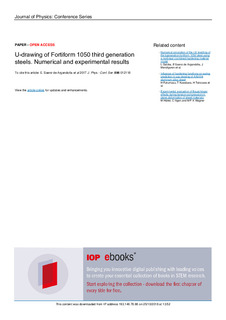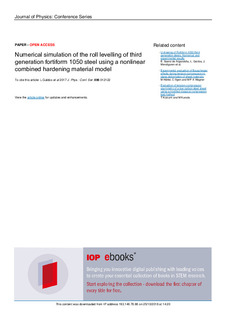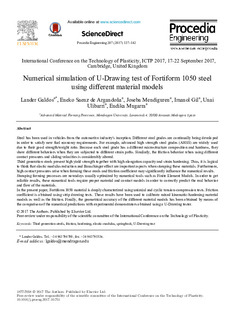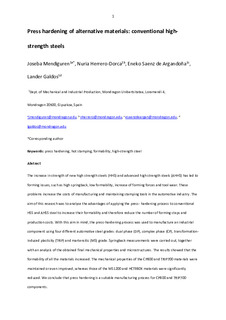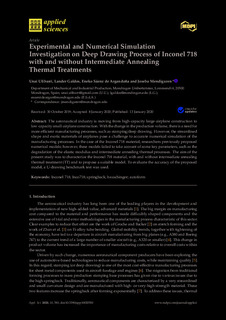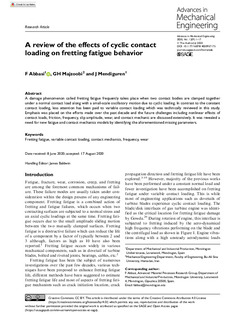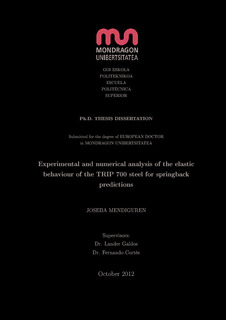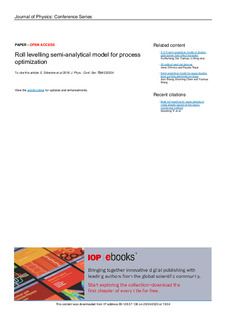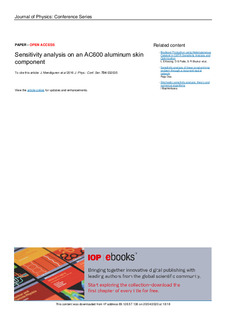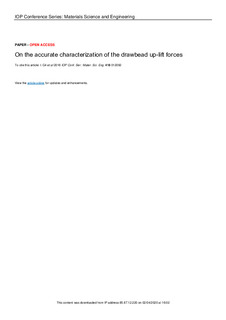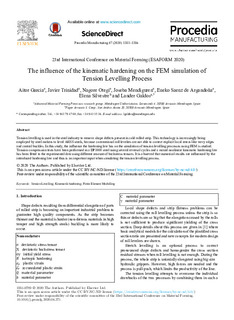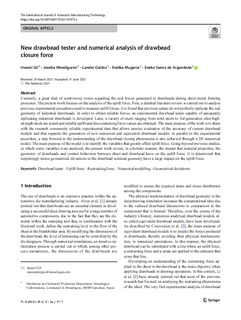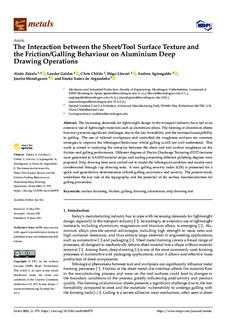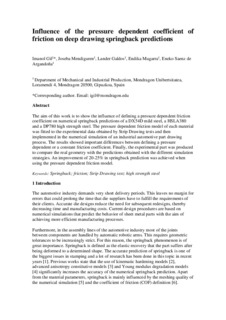Bilatu
34-tik 1-20 emaitza erakusten
U-drawing of Fortiform 1050 third generation steels. Numerical and experimental results
(IOP Publishing Ltd, 2017)
Elasto–plastic behavior of the third generation Fortiform 1050 steel has been analysed using cyclic tension–compression tests. At the same time, the pseudo elastic modulus evolution with plastic strain was analysed using ...
Study on the influence of the springback on the hole expansion ratio characterization
(Whioce Publishing, 2018)
Material formability has become one of the main problems, together with the springback, when stamping high
added-value components for the automotive industry. The pursuit of weight reduction has led to higher strength ...
Numerical simulation of the roll levelling of third generation fortiform 1050 steel using a nonlinear combined hardening material model
(IOP Publishing Ltd, 2017)
Elasto–plastic behavior of the third generation Fortiform 1050 steel has been analysed using cyclic tension–compression tests. At the same time, the pseudo elastic modulus evolution with plastic strain was analysed using ...
Numerical simulation of U-Drawing test of Fortiform 1050 steel using different material models
(Elsevier Ltd., 2017)
Steel has been used in vehicles from the automotive industry's inception. Different steel grades are continually being developed
in order to satisfy new fuel economy requirements. For example, advanced high ...
Press hardening of alternative materials: conventional high- strength steels
(Springer Nature, 2017)
he increase in strength of new high strength steels(HHS) and advanced high strength steels (AHHS) has led toforming issues, such as high springback, low formability, increase of forming forces and tool wear. These problems ...
Experimental and Numerical Simulation Investigation on Deep Drawing Process of Inconel 718 with and without Intermediate Annealing Thermal Treatments
(MDPI AG, 2020)
The aeronautical industry is moving from high-capacity large-airplane construction to low-capacity small-airplane construction. With the change in the production volume, there is a need for more e cient manufacturing ...
Towards the automation of the die spotting process: Contact blue pattern decryption
(Elsevier Ltd., 2020)
Automotive die spotting is one of the most complex and least standardized processes in the tool making process. A spotting expert identifies local contact areas through a blue-paste pattern and the die/sheet contact is ...
A review of the effects of cyclic contact loading on fretting fatigue behaviour
(Sage Publishing Ltd., 2020)
A damage phenomenon called fretting fatigue frequently takes place when two contact bodies are clamped together under a normal contact load along with a small-scale oscillatory motion due to cyclic loading. In contrast to ...
A coupled 3D wear and fatigue numerical procedure: Application to fretting problems in ultra-high strength steel wires
(Elsevier Ltd., 2021)
This work presents a coupled 3D wear and fatigue numerical procedure for fretting problems in ultra-high strength steel wires that combines Archard’s wear equation with the Smith–Watson–Topper parameter to predict crack ...
Experimental and numerical analysis of the elastic behaviour of the TRIP 700 steel for springback predictions
(Mondragon Unibertsitatea. Goi Eskola Politeknikoa, 2012)
The demand for lightweight fuel-efficient vehicles and the increasing industrial competitiveness between constructors have motivated the automotive industry to introduce new materials and to reinforce the accuracy of metal ...
Roll levelling semi-analytical model for process optimization
(IOP, 2016)
Roll levelling is a primary manufacturing process used to remove residual stresses and imperfections of metal strips in order to make them suitable for subsequent forming operations. In the last years the importance of ...
Sensitivity analysis on an AC600 aluminum skin component
(IOP, 2016)
New materials are been introduced on the car body in order to reduce weight and fulfil the international CO2 emission regulations. Among them, the application of aluminum alloys is increasing for skin panels. Even if these ...
On the accurate characterization of the drawbead up-lift forces
(IOP Publishing Ltd., 2018)
The competitiveness of the automotive sector has led to a high demand of accuracy and reduction in lead-time of the deep drawing tool making process. In that regard, the numerical simulation of the deep drawing process has ...
Drawbead uplift force analytical model for deep drawing operations
(IOP Publishing Ltd., 2018)
Drawbead uplift force calculation has been an open issue among the deep drawing tool maker and software developers in the last years. Starting from the original work of Stoughton (1988) many have been the models presented ...
The influence of the kinematic hardening on the FEM simulation of Tension Levelling Process
(Elsevier Ltd., 2020)
Tension levelling is used in the steel industry to remove shape defects present in cold rolled strip. This technology is increasingly being employed by steel makers to level AHSS steels, because conventional roll levelers ...
New drawbead tester and numerical analysis of drawbeads closure force
(Springer, 2021)
Currently, a great deal of controversy exists regarding the real forces generated in drawbeads during sheet metal forming processes. The present work focuses on the analysis of the uplift force. First, a detailed literature ...
The Interaction between the Sheet/Tool Surface Texture and the Friction/Galling Behaviour on Aluminium Deep Drawing Operations
(MDPI, 2021)
The increasing demands for lightweight design in the transport industry have led to an extensive use of lightweight materials such as aluminium alloys. The forming of aluminium sheets however presents significant challenges ...
Comparison of the hardening behaviour of different steel families : from mild and stainless steel to advanced high strength steels
(Elsevier Ltd., 2015)
Although steel has been used in vehicles from the automotive industry's inception, different steel gradesare continually being developed in order to satisfy new fuel economy requirements. For example,advanced high strength ...
Influence of the pressure dependent coefficient of friction on deep drawing springback predictions
(Elsevier Ltd., 2016)
The aim of this work is to show the influence of defining a pressure dependent friction coefficient onnumerical springback predictions of a DX54D mild steel, a HSLA380 and a DP780 high strength steel. Thepressure dependent ...
Elastic behaviour characterisation of TRIP 700 steel by means of loading-unloading tests
(Elsevier Ltd., 2015)
The elastic behaviour of TRIP 700 steel under plastic deformation is analysed. The analysis is carried out by means of classical tensile test and loading–unloading cyclic tests. These tests have been performed using high ...


